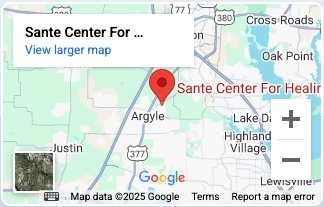Neurofeedback is becoming more common in addiction treatment. It’s an outgrowth of biofeedback research and treatment. Yet, many people don’t know how this particular treatment works. They also wonder, are there any neurofeedback therapy side effects? Fortunately, Santé Center for Healing is familiar with and experienced in this form of mental health treatment and addiction recovery. We can guide individuals through how neurofeedback therapy operates and help them find the proper treatment to meet their unique needs. Call 866.238.3154 today to learn more about neurofeedback therapy for addiction treatment.
What Is Neurofeedback Therapy for Addiction Treatment?
This treatment focuses on brainwave activity. It’s non-invasive, which means there is no surgery. When you sit down for a session, the clinician explains the process. Next, they attach sensors to your head that connect to a computer that measures your brainwave activity. You might begin interacting with the program via a video game or similar input. A neurofeedback therapy program looks at waves that the various areas of the brain generate. Similarly, it allows for the creation of a brain map. Doing so lets the clinician show you how your brain waves in specific regions compare to others. Neurofeedback therapy is suitable for people who struggle with addiction and trauma. Because addiction’s a brain disease, it makes sense that working with brainwave patterns can lead to healing. For example, training your brain to boost specific wave activities could prevent relapse and cravings. Besides that, the treatment helps individuals who have undergone traumatic experiences and need PTSD treatment.
Combining Neurofeedback Therapy with Other Interventions
This intervention isn’t enough to help you overcome psychological addiction. There are additional treatments that need to work together. Examples include:
- Medical detoxification to help you withdraw safely and painlessly from drugs or alcohol
- Dual diagnosis therapy for program participants with underlying depression or anxiety
- Trauma treatment that benefits individuals whose past experiences influence drug cravings
- Polyaddiction therapy, which helps you overcome multiple chemical dependencies
- Family therapy is a way to reconnect with loved ones, rebuild trust, and receive support
Against this backdrop, neurofeedback lets you and the therapist focus on the brain areas that need healing. With an eye on relapse prevention, you work on recovering and reaching lifelong sobriety. Many program participants decide to continue neurofeedback treatments after they graduate from the program. Doing so, along with support group attendance, is an excellent idea.
Possible Neurofeedback Therapy Side Effects
As a non-invasive where nothing enters your body, whether needles or medications, side effects are minimal. They may include the following:
- Drowsiness
- Headaches
- Anxiety
- Fatigue
Most people who participate in neurofeedback therapy find it comfortable and beneficial. Talking to your therapist about any side effects you experience during treatment is a good idea. They can quickly adjust the program to minimize or eliminate those feelings. Depending on which brainwaves you focus on during treatment, you may have emotions that go along with them. There’s also a chance of encountering neurofeedback therapy side effects if you have epilepsy. Discuss any health concerns or neurological conditions with the therapist before beginning.
Comprehensive Addiction Treatment Programs Lead to a High Chance of Successful and Lasting Recovery
You now know about neurofeedback therapy’s side effects and the advantages of the treatment. Isn’t it time to learn more? At Sante Center for Healing, we offer various therapies to help individuals identify, address, and overcome their mental health issues and substance use disorders. Some of the therapies we offer include:
- Art therapy
- Cognitive-behavioral therapy
- Dialectical behavior therapy
- EMDR therapy
- Fitness therapy
- Group therapy
- Individual therapy
- Medical nutrition therapy
- Meditation therapy
- Music therapy
- Recreational therapy
- Yoga therapy
Our addiction treatment programs are not only comprehensive but also customized. We ensure that each individual receives the care and support they need to succeed in their recovery journey.
Find Neurofeedback Therapy for Addiction Treatment in Texas at Santé Center for Healing
What to try neurofeedback therapy for addiction treatment in The Lone Star State but worried about neurofeedback side effects? Contact Sante Center for Healing today at 866.238.3154 to learn more.







